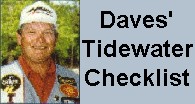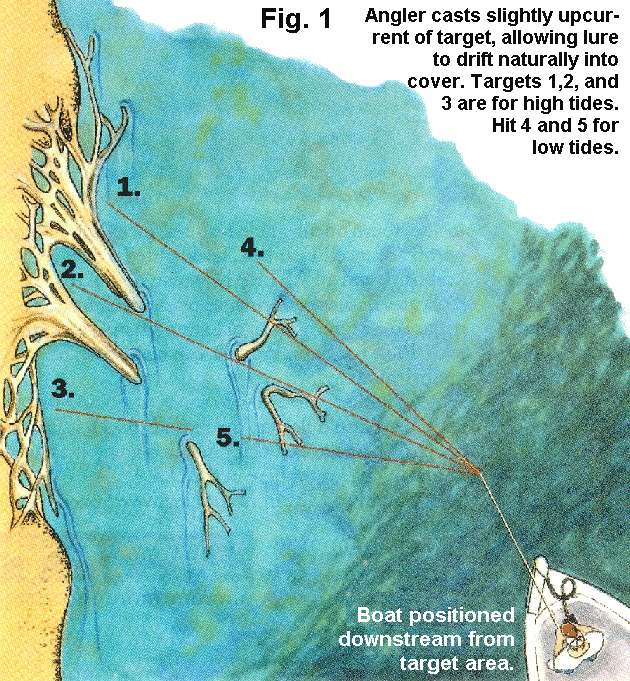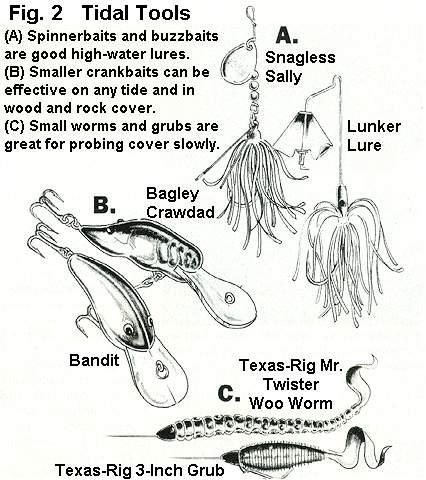 |
|
Written And Illustrated By BERNIE SCHULTZ
Find cover washed with an outgoing tide, and you should find bass as well...
Understanding river systems can be challenging enough. Add the
influences of tides, and fully comprehending that same river can
seem almost impossible. | tide!" Though
these figures seem a bit extreme, Daves
offers an explanation: "Falling water levels concentrate bait
and put bass in predictable locations," he confides. "Rising water,
on the other hand, spreads fish out, making them hard to find."
As the water level drops, it also reveals underwater features bass
use as feeding stations. During the slack-water periods, Daves tries
to become familiar with the structures hidden at higher tides. |
riverine structure
productive is
current. With the flow comes the forage upon which river fish feed. |
|
|

|
|||
Key places to search for good cover include creeks, creek mouths, channel
bends, and bars. Deep-water access is often critical for a piece of cover
to attract quality fish. And these areas offer just that. |
fast-moving lures
that cover lots of water. Buzzbaits, spinnerbaits, and
shallow-running crankbaits usually get the call. He throws them to the inside
edges of weedbeds, in the backs of creeks or over flooded terrestrial cover.
The chances of finding a concentration during high water is highly unlikely.
Strikes will be scattered and few. |
|||
![]() Send e-mail to bernie@bernieschultzfishing.com with questions or comments about this web
site.
Send e-mail to bernie@bernieschultzfishing.com with questions or comments about this web
site.

